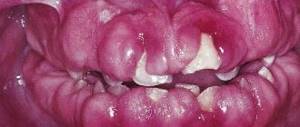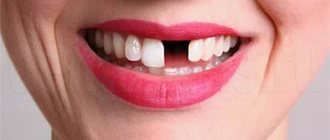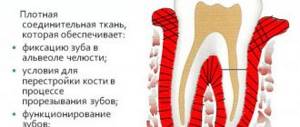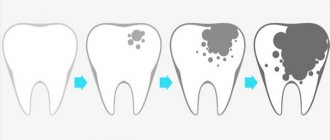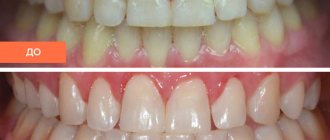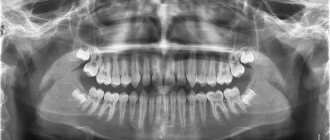A wedge-shaped tooth defect is a non-carious lesion, which is characterized by the formation of a wedge-shaped defect in the neck of the tooth. Such defects can appear on any teeth, but most often they occur on the canines, premolars (i.e. 3, 4, 5 teeth of the upper and lower jaw), less often - in the area of the anterior group of teeth. Wedge-shaped defects are always located only on the outer side of the teeth, which faces the lips or cheeks. The defects are wedge-shaped (steps).
Human teeth are very susceptible to developing wedge-shaped defects, and it is rare to meet a person who does not have them. In dentistry, the treatment of such defects, despite its apparent simplicity, is not an entirely simple task, because After treatment, fillings often fall out (below we will tell you what this is connected with), and patients have to go to the dentist again.
Wedge-shaped tooth defect: photo
If you look closely at the photographs, you will notice that wedge-shaped tooth defects have a smooth, shiny surface. Moreover, small defects (within the thickness of the tooth enamel layer) have the most common color, characteristic of the enamel of this patient’s teeth. And only if the lesion extends not only to the depth of the enamel, but also involves dentin, such defects have a pigmented surface.
If a wedge-shaped defect is formed, the symptoms are usually expressed in the appearance of moderate hypersensitivity of the teeth to various irritants (cold water or air, sweet or sour foods, as well as sensitivity to mechanical irritants - pain when brushing teeth). However, in some cases, the process can be asymptomatic, which is associated with the gradual deposition of replacement dentin from inside the pulp chamber, in which the neurovascular bundle of the tooth is located.
Causes of wedge-shaped defect
Wedge-shaped dental defects have various causes. In this regard, experts identify several main theories according to which enamel destruction occurs.
Mechanical theory of destruction . The first reason that may result in pathology is the wrong choice of instruments for oral hygiene. Due to the fact that the toothbrush has too soft or, conversely, too hard bristles, hygiene procedures can have a detrimental effect on the neck, the most vulnerable area of the tooth.
Erosive theory of destruction . The destruction of tooth enamel or its thinning occurs as a result of consuming large amounts of acidic foods. Acids contained in large quantities in citrus fruits (lemons, oranges, grapefruits, etc.) have a negative effect on tooth enamel. It is recommended to review your daily diet and minimize the consumption of foods containing acetic acid.
Visceral theory of destruction . Enamel damage can occur as a result of diseases of various body systems, most often endocrine and nervous. Also, a wedge-shaped defect can be caused by impaired functioning of the gastrointestinal tract.
Periodontal theory of destruction . Various periodontal diseases, which are accompanied by an inflammatory process, provoke the development of a wedge-shaped defect. This is due to the fact that during such processes the gingival margin recedes and the neck of the tooth is exposed.
Occlusive theory of destruction . One of the reasons for the formation of a wedge-shaped defect is the incorrect distribution of pressure during chewing of food. Due to small movements of the dentition, the concentration of occlusal pressure falls on the cervical region, where the tooth enamel is thinnest. The result of such pressure is the detachment of tooth enamel and the formation of a defect. According to the occlusal theory, the maximum risk of developing a wedge-shaped defect is people with malocclusion.
Stages of wedge-shaped defect .
Due to the nature of the course of the disease, a wedge-shaped defect causes virtually no discomfort to the patient, which is often the reason for late seeking help from specialists. Maximum attention to the condition of the teeth can help to notice the disease at an early stage, which will allow you to quickly cure the wedge-shaped defect.
Where does the problem come from?
A wedge-shaped defect appears due to many reasons. And therefore, before carrying out treatment, you need to understand the etiology of the disease. And it’s even better not to be guided by photos on the Internet and compare with your appearance in the mirror, but go directly to the dentist, who will diagnose the problem and take action. The sooner, the better.
So, teeth acquire a so-called wedge-shaped defect or are affected by it for the following reasons:
- improper brushing of teeth: here, first of all, we are talking about excessive pressure on the enamel in the process of daily hygiene care. The direction of the brush also matters; it should “walk” strictly vertically or in a circular motion, and not in the direction of the horizon, since such actions are very traumatic for the enamel. In addition, the brush should not have hard bristles: medium-hard bristles will be more than enough for most people,
Improper brushing of teeth can cause problems - effects of acids: let's think about where we get a large amount of acids from? Of course, from food and drinks. So, love for sour berries and citrus fruits should be moderate and strictly limited. The same rule applies to freshly squeezed juices, soda,
- malocclusion: in this case, the load between all elements of the dentition is distributed incorrectly. “Loaded” teeth suffer the most from this state of affairs, which is manifested by sensitivity, abrasion and damage to the enamel,
- whitening procedures: we never tire of reminding our readers how harmful uncontrolled home whitening with soda, charcoal or lemon can sometimes be. You should not be zealous in carrying out in-office professional procedures, and perform them more often than once a year. And in order not to think later about how to treat a wedge-shaped defect, improve the condition of your smile before such procedures using fluoridation or remineralization of the enamel. And do not forget that you should not use whitening toothpastes on an ongoing basis, but only several times a year, in courses of one month,
Do not overdo whitening procedures at home - Gastrointestinal diseases and hormonal disorders: a wedge-shaped tooth defect occurs to a greater extent in people with high acidity of gastric juice and in women over 35 years of age, when, due to a surge in hormones, calcium is actively washed out of the body.
The problem can also appear against the background of gum disease and periodontal tissue (gingivitis, periodontitis), alcohol abuse, and those who often eat solid foods. Elderly people are also at risk. And even those who wore braces when contacting a non-professional orthodontist may encounter such a nuisance as wedge-shaped defects.
Stages of wedge-shaped defect
During its development, a wedge-shaped defect goes through four stages:
- The initial stage of development of the disease is recorded without any visible changes. At first glance, the enamel on the surface of the tooth is not damaged, and the tooth itself looks intact and healthy. It is almost impossible to determine a wedge-shaped defect during this period. The only thing patients complain about is increased tooth sensitivity.
- The superficial stage of development of the disease is characterized by the manifestation of more pronounced signs of a wedge-shaped defect. During this period, you can notice that small flaws began to form on the surface of the tooth, the depth of which does not exceed three millimeters.
- The average stage of development of the disease shows that the patient has more significant defects, the size of which is 3-4 mm. During this period, you can notice that the surface of the tooth has two tiers, converging in one place at an angle of approximately 45 degrees.
- The deep stage of development of the disease is caused by the penetration of a wedge-shaped defect into the tooth cavity to a depth of more than five millimeters. If timely treatment is not carried out, there is a risk of tooth loss as a result of its fracture.
The first two stages are most often recorded in young people under 35 years of age, the last two - in people of mature age (after 40 years).
Symptoms of a wedge-shaped defect
A disease such as a wedge-shaped defect has a sluggish course. The process of education and development is long and often does not have pronounced symptoms at the initial stage and does not bring significant discomfort to the patient. The only thing that can alert the patient is increased sensitivity of the teeth. The process of eating sour, as well as too hot or cold food becomes unpleasant. At the initial stage of the disease, the patient feels discomfort during oral hygiene procedures.
Due to the fact that there is no change in the color of the enamel, it is quite difficult to notice the disease at an early stage. Teeth already affected by a wedge-shaped defect have a healthy appearance, their surface remains smooth and shiny.
In some cases, depending on the individual characteristics of the body, the patient may feel sharp pain when the irritant comes into contact with the tooth enamel. The disease can be noticed only in later stages, when the neck of the tooth begins to become exposed, and depressions are visible on its surface. When a wedge-shaped defect has developed, it can penetrate the tooth cavity and affect the dentin, which will lead to the appearance of brown plaque in the area where the tooth and gum meet.
The main symptom of a wedge-shaped defect is noticeable in the last stages of development. Upon examination, the dentist notes a V-shaped exposure of the tooth with thinning of the enamel at the root. The main reason that brings a patient to see a dentist is related to a cosmetic defect in the oral cavity.
Why wedges form on teeth and what to do about it
A wedge-shaped dental defect is a non-carious lesion of hard tissues, which is characterized by the formation of defects of a certain shape. They affect the cervical region, that is, in the area of contact with the gum. Most often, damage to the frontal group of teeth is observed on the external, that is, visible, side. Therefore, patients with this disease also experience psychological discomfort associated with a violation of the aesthetics of their smile.
The defect has the appearance of a step that resembles a wedge - hence the name of the disease. The size of the defects can vary - from barely noticeable to complete chipping of the coronal part in the future.
Diagnosis of wedge-shaped defect
Wedge-shaped dental defects, the treatment of which must begin with a visit to the dentist, are easy to diagnose. The specialist first differentiates the defect from other diseases that have a similar picture: caries of varying depths and tooth erosion.
Diagnosis of the disease involves two methods:
- Visual inspection. The disease in later stages has pronounced signs that allow the dentist, upon examination, to understand that the patient has a wedge-shaped defect. The tooth enamel is damaged in the neck of the tooth, and there is a pronounced wedge-shaped recess on the gum.
- Mechanical method. This diagnostic method involves the impact of irritants on tooth enamel: chemical, mechanical or thermal. This method is ineffective and is used extremely rarely due to the fact that the wedge-shaped defect often has no symptoms in the form of pain.
General information
The defect refers to non-carious diseases of hard tissues. It can occur on any teeth, but most often affects canines and premolars, less often – incisors. A “wedge” forms only on the outer surface of the cheeks and lips. Unlike erosive damage to the enamel, its area remains smooth, and the intensity of pigmentation depends on the depth of the damage - the deeper it is, the more pigmented the area is due to exposed dentin.
On a note! A wedge-shaped defect can be virtually asymptomatic. This is possible with a slow pathological process and is associated with the deposition of replacement dentin.
Treatment of wedge-shaped defect
In order to eliminate a wedge-shaped tooth defect, specialists use methods that optimize occlusion. Depending on the degree and severity of the disease, one of the methods is selected, or several solutions are applied in the form of complex treatment.
A wedge-shaped defect, the treatment of which is performed orthodontically, involves the installation of braces. An equally effective way to treat the disease is orthopedic. In this case, the patient is fitted with crowns on the affected teeth. A selective method is also used, which involves grinding teeth with a wedge-shaped defect.
Most often, doctors use both methods. Treatment of a wedge-shaped defect takes quite a long time, especially when using the orthodontic method, the effectiveness of which is maximum.
The wedge-shaped defect of the initial stage consists of the correct selection of hygiene products, eliminating the effect of abrasives on the enamel. Also, to treat the disease, they resort to applications with restorative agents.
An advanced wedge-shaped defect is treated by filling, installing veneers and crowns.
Prognosis and prevention of wedge-shaped defect
With timely diagnosis and treatment of the disease, the prognosis is favorable. If treatment is not carried out, there is a risk of fracture or complete loss of the tooth.
Preventive measures include maintaining oral hygiene, which must be performed not only regularly, but also efficiently. To avoid the appearance of foci of demineralization, it is necessary to use pharmaceutical preparations for dental care. It is very important to choose the right toothbrush with normal bristles and one that is suitable for the individual characteristics of the oral cavity. For prevention purposes, it is recommended to remove tartar in a timely manner.
Cervical caries
Cervical caries affects the tissue located between the neck of the tooth (hidden under the gum) and its crown (the visible part of the tooth). That is, the carious process is localized near the gum itself. In my clinic, it is no different from any other caries. It has all the same stages of development (spot, superficial, medium, deep caries). May turn into pulpitis. The only peculiarity is that the localization of caries makes it invisible during a casual examination of the oral cavity. That is why in the Calypso clinic it is better not only to treat cervical caries and wedge-shaped defects, but also to conduct regular examinations.
For filling, composite materials are used, often photopolymers (the so-called photofill). The proximity of the process to the gum determines its correction if necessary. If, after preparing a tooth (removing all tissues damaged by caries), a deep cavity is formed, the doctor will correct the edge of the gum at the first visit. Filling is carried out at the second appointment.
Don't hesitate to ask to be taught proper oral care. Calypso specialists will be happy to help you in this matter.
